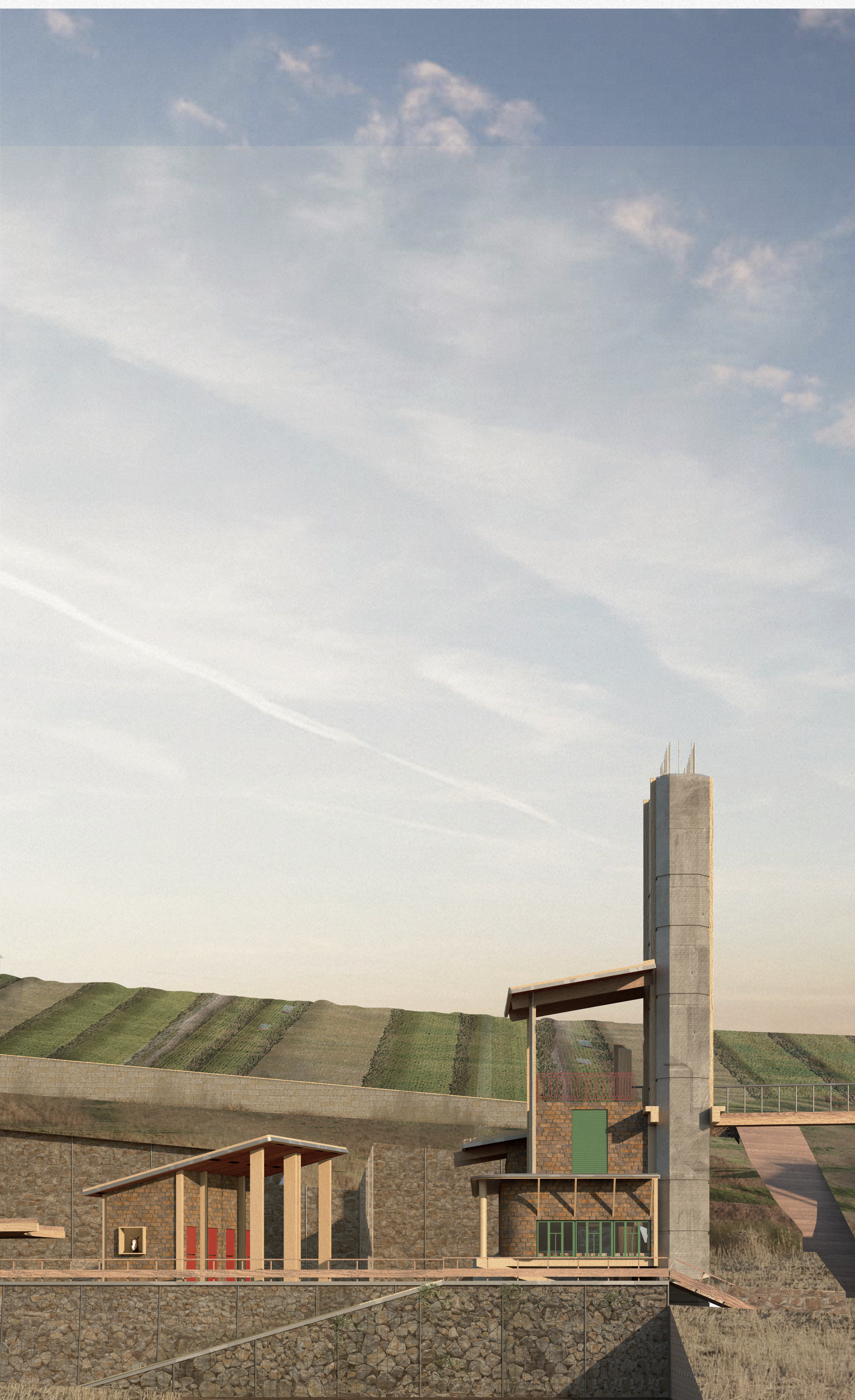The Proportional Path: Sowing Seeds of Coexistence
Collaborative painting with Richard Kirk.
In inland Sicily, the ‘borghi’ are emblematic villages built in the 1930s under Mussolini to politically indoctrinate rural populations. These villages provided convenient access to essential resources such as water, religion, and medical care. They remain significant ruins in Sicily today due to ongoing discussions on decolonization, tourism, and the marginalization of rural areas in a post-pandemic world. In 2009, the Sicilian government launched the ‘Way of the Villages’ project, aiming to revive seven villages in inner-land Sicily as tourist centres.
Central Sicily also contains unfinished infrastructures; abandoned due to conflicts between the government and mafia corruption. These remnants of modernity disrupt ecological cycles and memorialise right-wing narratives. Through their material consolidation, significant areas of land could begin to recover from Sicily’s troubled past.
To address these two types of ruins, the project implements principles of proportion to curate the past. The program is a service centre that navigates between the geometries of existing architectural elements and viaduct columns. The 2009 program is retained yet proposed at the incomplete viaduct instead. By building on existing reuse methods, heritage is memorialized and adapted for a renewed pragmatic use that anticipates Sicily’s changing climate and population. Equestrian, cycling, and dwelling amenities are proposed that are assembled using materials symbolically salvaged and relocated from borgo heritage.
![]()
Working across the borgo communes chosen by the Via Dei Borghi scheme, each reusable element is analyzed and adapted for proportional use.
The project examines the extent to which historical relevance supports heritage value and who should bear responsibility for this, especially considering Sicily’s shifting demographics toward a larger North African population. Harnessing heritage to de-seasonalise Sicily will foster socio-economic cohesion to aid the island’s urban rural divide and drive local economies. Sicily’s could be reframed beyond the populist aestheticization of Mediterranean life and instead use heritage to democratically return inner-land Sicily to functional use.
![]()











